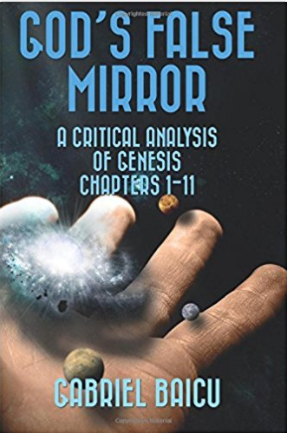
 Contradictions in the Bible
Genesis 1-11 and their theological consequences
Contradictions in the Bible
Genesis 1-11 and their theological consequences
Genesis 1-11
Read the entire book online!
Contradictions in the Bible | Creation of the stars, sun and moon
| |
|
In relation to the creation of the celestial bodies on the fourth day of creation, the author or authors of the book of Genesis could have made such an error only because they didn’t know how the universe really works. At the same time, God surely knew how the universe works so either He didn’t inspire the book of Genesis or He deliberately has misled us about the issue.
- 142 -
The first option is the correct one because God cannot lie and be perfect at the same time. Taking into consideration the huge distances between the stars and the earth the light from the stars couldn’t have reached the earth and become visible in the night after the fourth day of creation. In this case, it isn’t clear why God declared that their creation was good. How good was the creation of the stars, in the fourth day, if their light was unable to reach Earth, in the same day? It wasn’t that good.
When the closest star to the earth had been created by God, according to scientific measurements, its light needed at least four years to come to the earth. According to the book of Genesis, during this time human beings were also created and they probably needed signs for their orientation during the nights, but the signs weren’t there. At the same time, birds which would have been created on the fifth day would have also needed the stars for their navigation during the night, but the light of the closest star would have arrived on Earth four years too late.
One of the closest stars to the earth is Proxima Centauri, the closest star to the Solar System. Part of a triple-star system called Alpha Centauri, Proxima is 4.22 light-years from the earth. Alpha Centauri is actually the brightest star of the three in the system, and so the system is named after this star. Alpha Centauri is part of a closely orbiting binary about 4.37 light-years from Earth, but Proxima Centauri (the dimmest of the three) is an isolated red dwarf star 0.15 light-years from the binary.[1]
The stars, created on the fourth day, were useless as lighting bodies for a long period of time. A light-year is a unit of distance. It is the distance that light can travel in one year. Light moves at a velocity of about 300,000km each second. So in one year, it can travel about 9.5 trillion kilometres. In other words, one light-year is equal to 9,500,000,000,000 kilometres. The distance which separates Proxima Centauri from the earth is given by multiplying 9.5 trillion kilometres by 4.22.[2]
If God created the stars on the fourth day, their light didn’t reach earth the same night, so at the beginning they were useless. Some creationists tried to find a solution to this problem in the idea that God would have created the universe already mature and the light would have been created in transit. This isn’t a good explanation for the lack of purpose of the stars created in the fourth day of creation and I quote:
- 143 -
“The only problem with assuming that the light was created in-transit is that we see things happening in space. For example, we see stars change brightness and move. Sometimes we see stars explode. We see these things because their light has reached us. But if God created the light beams already on their way, then that means none of the events we see in space (beyond a distance of 6,000 light-years) actually happened. It would mean that those exploding stars never exploded or existed; God merely painted pictures of these fictional events. It seems uncharacteristic of God to make illusions like this. God made our eyes to accurately probe the real universe; so we can trust that the events that we see in space really happened. For this reason, most creation scientists believe that light created in-transit is not the best way to respond to the distant starlight argument.”[3]
This is also an acknowledgment that the age of the universe cannot be reduced to 6,000 years – it is much older. Another attempt, which purports to explain long distances in the universe and their effect on the narratives of creation, is contained by the following quotation:
“Suppose that our solar system is located near the center of a finite distribution of galaxies. Although this cannot be proven for certain at present, it is fully consistent with the evidence; so it is a reasonable possibility. In that case, the earth would be in a gravitational well. This term means that it would require energy to pull something away from our position into deeper space. In this gravitational well, we would not “feel” any extra gravity, nonetheless time would flow more slowly on earth (or anywhere in our solar system) than in other places of the universe… This being the case, clocks on earth would have ticked much more slowly than clocks in deep space. Thus, light from the most distant galaxies would arrive on earth in only a few thousand years as measured by clocks on earth.”[4]
- 144 -
According to astronomic observations our solar system is not located near the centre of a finite distribution of galaxies, but somewhere inside the Milky Way galaxy, not even in the centre of it. The idea of a gravitational well in which is located our solar system, is a fantasy.
It is hard to imagine the earth in the centre of a finite distribution of galaxies if it isn’t in the centre of its own galaxy, the Milky Way. If we imagine a dinner plate as the Milky Way, and draw an imaginary line from the centre of the plate to the outside, then we’re located about halfway along that line.[5]
A few thousand years, measured by clocks on Earth, even if it makes the time shorter, doesn’t, nevertheless, solve the problem. In any case, the light from the stars didn’t reach the earth in the same day. One can see that the creationists don’t have any answer to the problem of huge distances in the universe, because for them the earth is about 6,000 earthly years old and this is a very short period of time for the universe, and in this period of time nothing has been changed in an essential way. About 6,000 earthly years ago the universe was not dramatically smaller than today, probably just a little bit smaller, and that wouldn’t have affected the flow of time to an important degree.
The lights of the stars were not there on the fourth day, in order to lighten the earth during the night, and more importantly to be signs in the sky.[6]
- 145 -
[1] www.universetoday.com/.../how-long-would-it-take-to-travel-to-the-near...
[2] starchild.gsfc.nasa.gov/docs/StarChild/questions/question19.html
[3] https://answersingenesis.org/astronomy/stars/were-stars-created/
[4] https://answersingenesis.org/astronomy/stars/were-stars-created/
[5] www.universetoday.com/65601/where-is-earth-in-the-milky-way/
[6] https://answers.yahoo.com/question/index?qid...
| |
➤ |
|
© Copyright 2025 Contradictions in the Bible Joomla Templates by JoomDev


